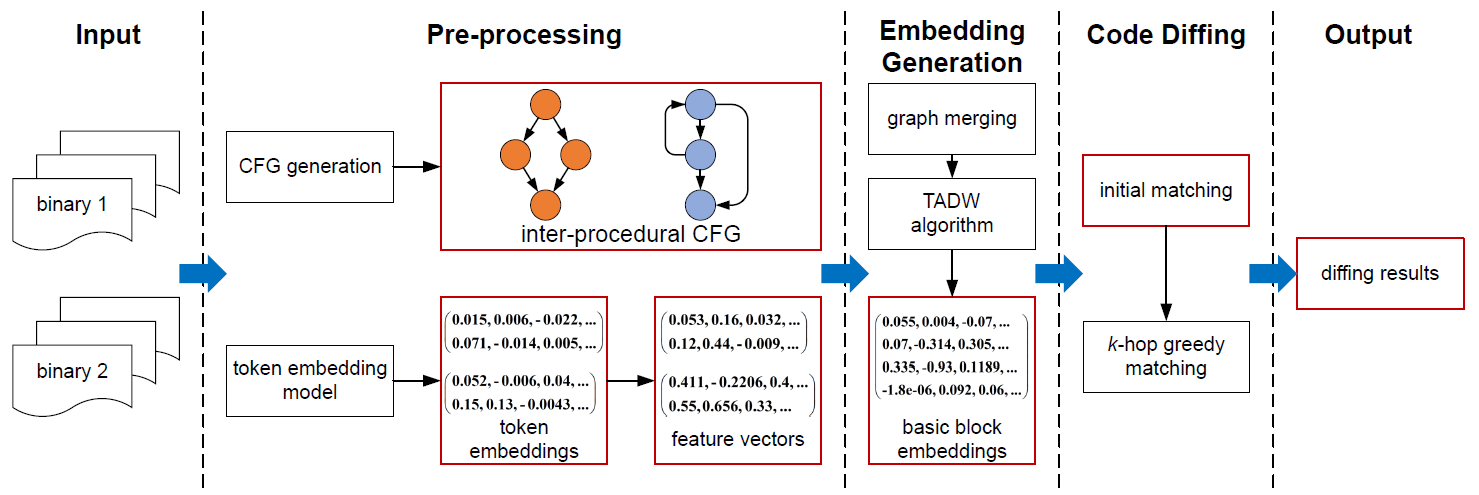Contents
Out-of-sample Node Representation Learning for Heterogeneous Graph in Real-time Android Malware Detection

与腾讯安全实验室的合作项目,部署在名为AiDroid的系统中。一作即HinDroid (KDD 2017最佳应用论文)的作者,改进的部分主要是解决了out-of-sample node的问题。
Proposed Method
Feature Extraction
-
Dynamic Behavior Extraction: extract the sequences of API calls in the application framework from runtime executions of Android apps to capture their behaviors.
“TigerEyeing” trojan: connecting to the C&C server in order to fetch the configuration information;
(StartActivity, checkConnect, getPhoneInfo, receiveMsg, sendMsg, finishActivity)
事实上AiDroid并未用到序列信息,仅在对比实验中用了。
-
Relation-based Feature Extraction
-
R1: the app-invoke-API relation
-
R2: the app-exist-IMEI relation
IMEI(International Mobile Equipment Identity,国际移动设备识别码)
-
R3: the app-certify-signature relation
-
R4: the app-associate-affiliation relation
根据package name推测,如”com.tencent.mobileqq”->app: mobileqq, affiliation: tencent.com
-
R5: the IMEI-have-signature relation
-
R6: the IMEI-possess-affiliation relation
-


